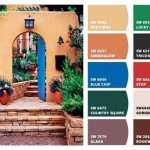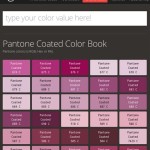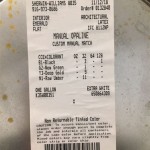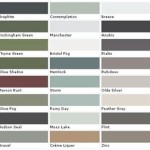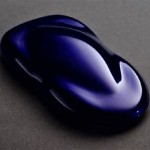What Colors Does Chalkboard Paint Come In?
Chalkboard paint, initially known primarily for its matte black finish resembling traditional chalkboards, has evolved significantly in terms of color availability. While black remains a popular and classic choice, consumers now have access to a broader spectrum of colors to suit various aesthetic preferences and design needs. This article explores the range of colors available in chalkboard paint, factors influencing color selection, and considerations for achieving the desired aesthetic impact.
Traditionally, chalkboard paint was formulated using a specific blend of pigments and binders that yielded a dark, matte finish ideal for accepting and displaying chalk marks. This characteristic finish was crucial for providing sufficient contrast for visibility and ensuring that chalk could be easily erased without leaving permanent stains. The pursuit of alternative colors, while maintaining these essential performance characteristics, has led to innovations in paint chemistry and pigment technology.
The expansion of color options in chalkboard paint offers greater flexibility in decorating homes, classrooms, restaurants, and other environments. Instead of being limited to a single, dark color, individuals can now integrate chalkboard surfaces seamlessly into existing color schemes and design concepts. This development has broadened the appeal of chalkboard paint beyond its traditional functional uses, transforming it into a versatile decorative tool.
The Classic Black and its Variations
Black remains the quintessential color for chalkboard paint and serves as the benchmark for assessing the performance of other colors. This is largely due to its superior contrast with white or colored chalk, ensuring maximum readability. However, even within the realm of "black" chalkboard paint, subtle variations exist. Some formulations may lean towards a deeper, richer black, while others might have a hint of gray or charcoal. These slight differences are often attributable to the specific pigments used and the manufacturing process.
Furthermore, the texture of the paint can influence the perceived color. A smoother, more refined finish may appear slightly darker than a rougher, more porous finish. Consumers should therefore carefully consider the sheen and texture of the chalkboard paint when selecting a black formulation, ensuring it aligns with their desired aesthetic outcome.
The consistent demand for black chalkboard paint has also spurred innovation in its formulation. Manufacturers now offer low-odor, low-VOC (volatile organic compounds), and environmentally friendly black chalkboard paints, catering to health and environmental concerns without compromising performance. These advancements have solidified black's position as a sustainable and widely accessible option.
Exploring the Spectrum of Grays
Gray chalkboard paint offers a softer, more subtle alternative to black, making it suitable for spaces where a less stark contrast is desired. Gray hues range from light, almost white-gray, to deep, near-black charcoal shades. Lighter grays can create a more airy and open feel, while darker grays provide a sophisticated and modern aesthetic. The choice of gray will depend on the overall color palette of the room and the desired level of contrast with chalk.
The versatility of gray chalkboard paint makes it particularly well-suited for contemporary interiors. It can be seamlessly integrated into minimalist designs, industrial-chic spaces, or even Scandinavian-inspired rooms. The neutral nature of gray also allows it to pair well with a wide range of accent colors, making it a highly adaptable choice for various decorating styles.
When selecting a gray chalkboard paint, it is crucial to consider the undertones. Some grays may have subtle blue, green, or brown undertones, which can influence how they appear in different lighting conditions. Testing a small sample of the paint on the intended surface is recommended to ensure that the gray color complements the existing décor and lighting.
Venturing into Colors: The Expanding Palette
Beyond black and gray, chalkboard paint is now available in a diverse range of colors, including blues, greens, reds, yellows, and even pastel shades. This expansion of color options has opened up new possibilities for creative expression and personalized design. Manufacturers have developed techniques for incorporating pigments into chalkboard paint formulations while maintaining the necessary properties for chalk adhesion and eraseability.
The availability of colored chalkboard paint allows for the creation of visually engaging and functional surfaces in various settings. In classrooms, different colors can be used to designate specific learning areas or to create themed displays. In restaurants, colored chalkboard paint can add a playful and inviting touch to menus or promotional boards. In homes, colored chalkboard walls can serve as interactive art spaces for children or as decorative and functional message boards in kitchens or home offices.
However, it is important to note that the performance of colored chalkboard paint may vary depending on the specific pigments used and the manufacturing process. Some colors may not provide the same level of contrast with chalk as black or gray, potentially affecting readability. Additionally, certain pigments may be more susceptible to fading or staining over time. Consumers should therefore carefully research and select colored chalkboard paints from reputable brands known for their quality and durability.
Factors Influencing Color Selection of Chalkboard Paints
The selection of chalkboard paint color should be based on several factors. The intended use of the chalkboard surface is paramount. For example, a chalkboard used primarily for writing important notes or displaying detailed information will benefit from high contrast colors like black or dark gray.
Another factor to consider is the existing color scheme of the room or space. The chalkboard paint should complement the surrounding colors and contribute to the overall aesthetic harmony. A brightly colored chalkboard wall may work well in a child's playroom, while a more muted tone may be appropriate for a formal dining room. The desired mood and ambiance of the space also play a role in color selection. Darker colors can create a sense of intimacy and sophistication, while lighter colors can evoke feelings of openness and cheerfulness.
Lighting conditions should also be taken into account. Natural and artificial light can significantly affect how colors appear. It is advisable to test a sample of the chalkboard paint on the intended surface under different lighting conditions to ensure that the color is satisfactory. Finally, personal preferences should not be overlooked. The chosen color should reflect the individual's taste and style, creating a space that is both functional and aesthetically pleasing.
Considerations for Achieving the Desired Aesthetic Impact
Achieving the desired aesthetic impact with chalkboard paint requires careful planning and execution. Surface preparation is crucial for ensuring proper adhesion and a smooth, even finish. The surface should be clean, dry, and free of any loose paint or debris. Priming the surface may be necessary, especially if it is porous or uneven. Proper priming ensures that the chalkboard paint adheres uniformly and provides a consistent color.
The application technique also plays a significant role in the final outcome. Chalkboard paint should be applied in thin, even coats, allowing each coat to dry completely before applying the next. Using a high-quality brush or roller can help achieve a smooth, professional finish. Multiple coats may be required to achieve the desired opacity and color depth. Following the manufacturer's instructions regarding drying times and application methods is essential for optimal results.
After the chalkboard paint has fully dried, it is recommended to "season" the surface by rubbing it with chalk and then wiping it clean. This process helps create a slightly abrasive texture that is ideal for writing and erasing chalk. Regular cleaning and maintenance are also important for preserving the appearance and functionality of the chalkboard surface. Using a damp cloth or sponge to remove chalk dust is generally sufficient. Harsh chemicals or abrasive cleaners should be avoided, as they can damage the paint finish.
Furthermore, it is crucial to choose the right type of chalk for the chalkboard paint. Soft, dustless chalk is generally preferred, as it produces clear, legible marks and is less likely to scratch the surface. Avoid using oil-based chalk or chalk markers, as they can be difficult to remove and may leave permanent stains. By carefully considering these factors, individuals can effectively utilize chalkboard paint to create visually appealing and functional surfaces that enhance their homes, workplaces, and other environments.

Diy Chalkboard Paint Colors Easy Way To Make Any Color
How To Mix Chalkboard Paint In Any Color A Beautiful Mess

Make Chalkboard Paint In Any Color You Want Twelve On Main

Make Your Own Chalkboard Paint In Any Color Mom 4 Real

20 Chalkboard Paint Ideas To Transform Your Home Office

Add Chalkboard Paint Powder To Any Color Of And A Bedroom Wall Colors

Make Your Own Chalkboard Paint In Any Color Mom 4 Real

Make Chalkboard Paint In Any Color You Want Twelve On Main

36 Exciting Ideas To Decorate Kids Rooms With Colored Chalkboard Paint Woohome

Home Depot Chalkboard Paint Colors For The Big Closet In His Room Black Diy
Related Posts

